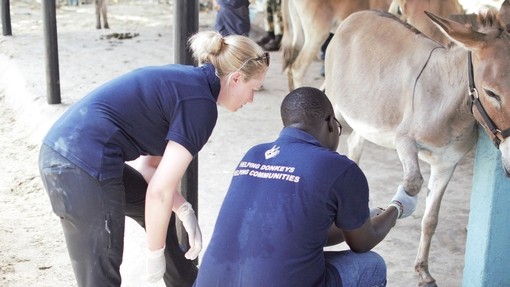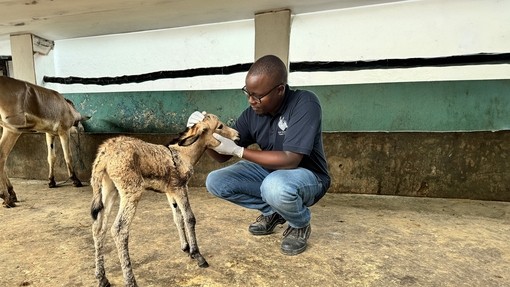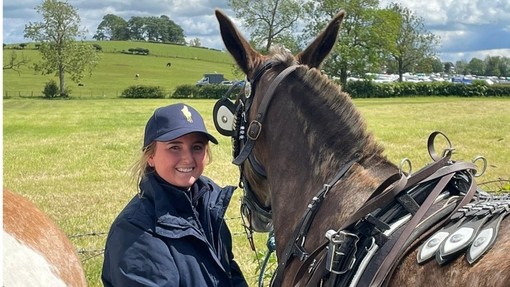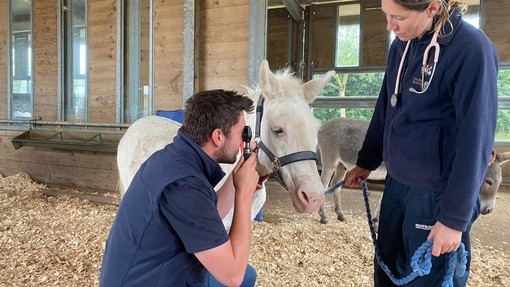
A behind the scenes look with Chris Platts
“I first discovered The Donkey Sanctuary on work experience from school at the age of 15, which I carried on during two summer holidays and again before starting university. I studied Forensic Science, but when a job became available in the lab in 2011 I jumped at it – and here I am 13 years later!
“We never know what is going to come into the lab, so people might be surprised to hear how interesting and varied our days are! The lab technicians work on a rota, so they get to work on a different area each week – that could be blood work, parasitology or PCR testing – a term many people may recognise from Covid, which means to test genetic material in a sample to diagnose infectious diseases.”
“I really enjoy my role in the lab, particularly the responsibility it brings with leading such an important function within the veterinary department. I’m lucky to have a really forward-thinking, enthusiastic and compassionate team.”
The Dung Lab and Blood Lab
“The lab technicians working in our ‘Dung Lab’ get through between 400-500 samples a week! This is primarily worm egg counts for our resident donkeys, but also includes clinical, admission, and pre-movement samples, as well as samples from Guardian homes and vet practices.
“In the ‘Blood Lab’ most of the samples come from sick donkeys that our vets are treating on farms, but there are also some from other vet practices and as part of medicals before moving donkeys or bringing them into the sanctuary.
“The lab technicians will start the day by setting up our blood analyser equipment and running all of the calibrations and quality controls that we do on a daily basis. Our lungworm tests set up the previous day are also ready first thing in the morning too.
“Around mid-morning samples from vet practices across the UK are delivered to the lab. They will be opened and booked in before being analysed in the appropriate lab. Most results for external samples are reported to the vet practices by the end of the same day.
“Blood samples are delivered throughout the day by our vet team and most are run and reported within a couple of hours, but more urgent samples can be run in under 30 minutes. There is always a steady stream of dung samples arriving from our farms during the day too!”

Supporting critical clinical decisions against the clock
“Since 2022 we have been running our own PCR at the Path Lab. PCR is a technique which detects the presence of viral, bacterial or fungal DNA within a sample. We don’t usually know when they are coming in, but always have a technician ready to perform PCR and in most cases we are able to report results within 3 or 4 hours. This is so important when there is a potential disease risk within a herd and the vets need to make important clinical decisions and initiate bio-security measures, such as restricting access to a farm, suspending animal movement or instigating isolation procedures. We can test for infectious diseases such as Strangles, Equine Herpesvirus and Equine Influenza.
“We also have two great anatomical pathology technicians (APTs) whose role is to support our Pathologist during post-mortem examinations (PME). This includes tasks such as preparing the post mortem room for a PME, taking and storing photographs, as well as collecting and sending samples for further diagnostics. These examinations are performed at the request of a veterinary surgeon and provide really vital feedback to the vets, which help make improvements to the welfare of all the donkeys we care for.
“One of the biggest challenges we face is time. The best samples are those that are submitted to us within 24 hours. The older a sample is the more tricky it can become to interpret the results. Blood analysers are also very complex machines, so when something goes wrong it can be a headache to troubleshoot when you are working against the clock – so that is definitely another challenge.

Pioneering donkey diagnostics
“The thing I like most about donkeys is that from a diagnostic point of view we are always learning more about them. There aren’t the same resources available for donkeys and mules as there are for horses, so interpretation of results can be tricky sometimes. For example, if a new diagnostic test or method is developed in the equine veterinary world most, if not all, the data will relate to horses. We then have to establish if and how it could be used to help us. It is complex things like this that make donkeys really interesting to me, and also make us world leaders in our field. I am committed to making sure all of the diagnostics we offer are up to date with the tests and techniques used in the wider equine veterinary world.
“I also love being a part of the clinical work; vets often discuss their cases with the team, which is really interesting for us and not something all lab technicians will get the chance to do. But the best thing about my job is seeing how the work we do supports our frontline work. Our diagnostics support clinical and critical care, general herd health, movement of donkeys, welfare cases, our guardian homes and private owners. People might not think of laboratories when they think of The Donkey Sanctuary, but there is a lot more to us than meets the eye!”
Find out more about our donkey-facing teams
Share this page
Tags
- Blog





